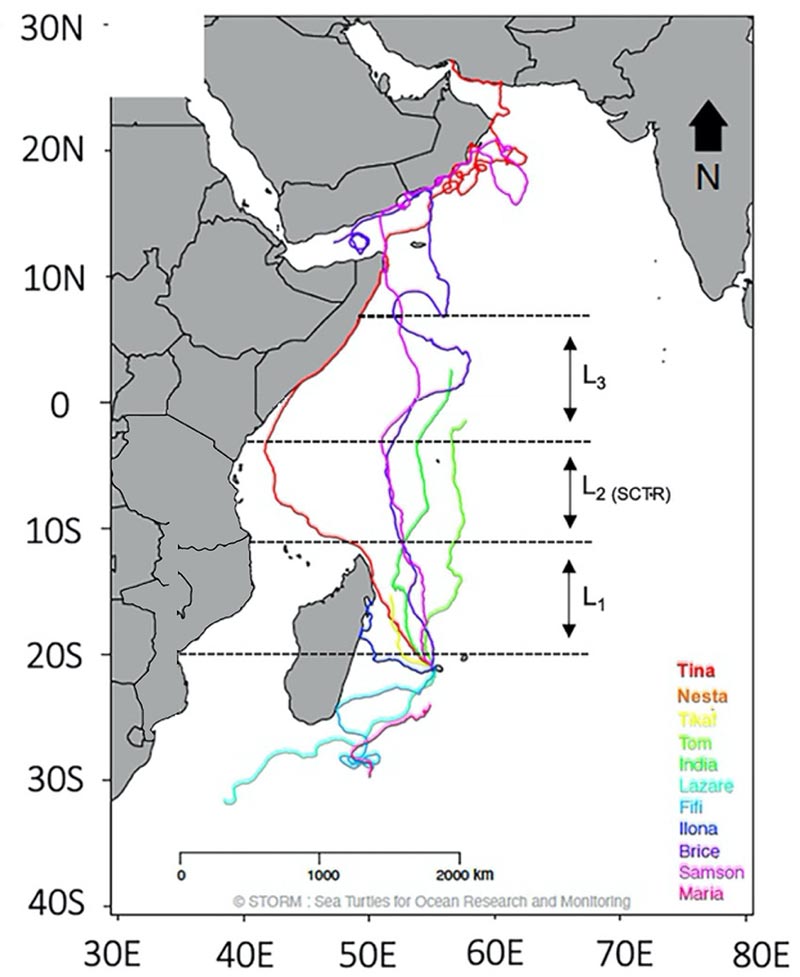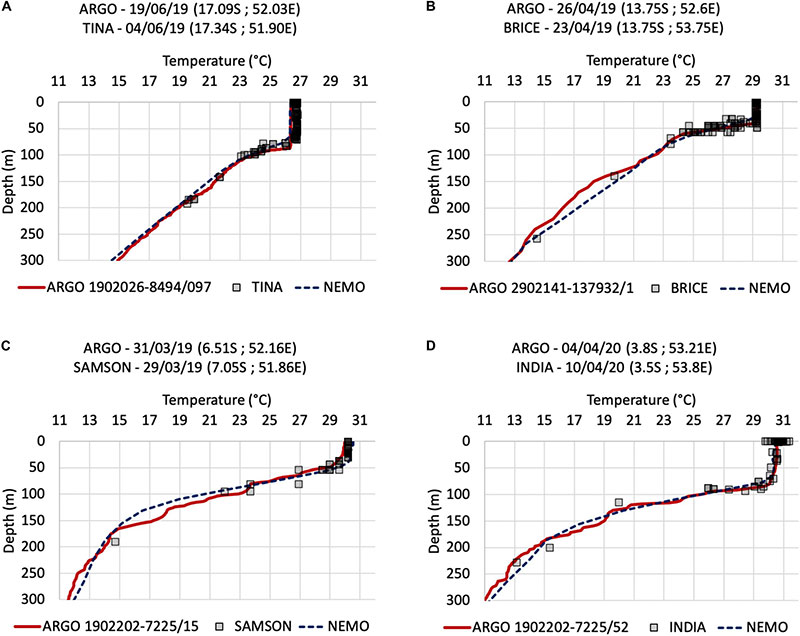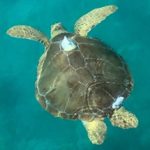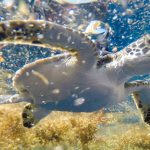← Back
Sea turtles in tropical cyclones
Collecting sea turtle-borne temperature and depth sensor data with Argos satellite telemetry tags helps to sample the first 100 m layer of tropical oceans, where tropical storms and cyclones take their energy. It also enables to understand the behaviour of sea turtles trapped in extreme events such as tropical cyclones.
As seen in Data collected from animals can help ocean observing systems, the automated ocean observing network suffers from a number of gaps that could potentially be filled by animal-borne sensors (a.k.a biologging) such as Argos tags deployed on sea turtles (see also Olive Ridley turtles help in ocean climate forecasting). As mentioned in the article, one of the benefits of using sea turtles to sample the structure of the ocean lies in the much higher sampling frequency than e.g. Argo drifters (10-day cycle), as these animals are diving and surfacing to breath up to 30 times per day.
Sea Turtles are in fact particularly well suited to collect measurements within the first 100 m layer of tropical oceans. This depth layer is of specific interest in regions where tropical storms and cyclones develop, as those atmospheric phenomena take their energy from the heat contained in the first metres of the ocean. Using sea turtle-borne temperature and depth sensors together with satellite telemetry tags could thus help sampling this meteorologically important parameter.

Tracked sea turtles
The Sea Turtles for Ocean Research and Monitoring (STORM) project equipped juvenile loggerheads (Caretta caretta) and Olive Ridley (Lepidochelys olivacea) turtles accidentally bycaught by fishing boats in the vicinity of Reunion Island (55.28°E; 21.15°S). All animals were brought to the Kelonia care centre for nursing. Once rehabilitated, they were equipped with Argos satellite telemetry tags, which included temperature and pressure sensors, and released, independently of the season.
In the first phase of STORM (Jan 2019 – June 2020) 11 turtles (8 loggerheads and 3 Olive Ridley’s) were released from Reunion Island. As of June 2020, about 115,000 pairs of depth/temperature observations have been collected over periods ranging from 28 days for the individual nicknamed “Nesta” to 480 days (“Tina”) throughout the western tropical Indian Ocean.
Temperature measured

Most of the temperature data collected by these sea turtles were within the first 100 m of the ocean (nearly 60% above 20 m, 40% within the 20–100 m layer). A few observations (2%) were also collected below 120 m, and down to 320 m and even 400 m (no temperature data have been recorded below 340 m). The mean dive depth was found to be different during day (mostly above 20 m) and night (mostly between 20 and 60 m).
The recorded temperatures were compared with collocated Argo float measurements as well as satellite and model data. There are in good agreement within error margins at all sampled depths.
Sea turtles measuring in tropical cyclones

Three of these sea turtles have been caught in a low-pressure tropical system (“India” and “Tom” in Tropical Cyclone Herold in March 2020), or in its immediate vicinity (“Brice” in Tropical Cyclone Kenneth in April 2019). Brice was trapped for several days in the immediate vicinity of Tropical Cyclone Kenneth in April 2019 during its cyclogenesis phase, while Tom and India moved close to Tropical Cyclone Herold in March 2020. India remained stationary for several days within 10–50 km of the storm eye, while Tom remained positioned a few hundred kilometres to the east.
Throughout this period, both sea turtles measured Sea Surface Temperature and vertical temperature profiles, in a situation where satellite-derived SST cannot be collected due to the presence of clouds (especially for Infrared instruments). These datasets, which are currently being analysed, will be very useful in assessing the response of ocean temperature to tropical cyclones, as well as the behaviour of sea turtles trapped in these extreme events.
Developing the sea turtle measurements network in the Indian Ocean
The first phase of STORM has allowed to demonstrate the benefit of using sea turtles to collect in-situ ocean data in this relatively poorly instrumented tropical area, and to better understand the spatial ecology of the animals.
The next phase of STORM, which has begun in November 2020, is aimed at investigating more precisely the structure of the ocean (and the behaviour of sea turtles) during the tropical cyclone season (Nov-April). From November 2020 to March 2021, a dozen of sea turtles – a few of them being equipped for the first time with conductivity sensors in addition to temperature and depth sensors – will thus be released from Reunion Island every 2-to-3 weeks to sample the structure of the ocean and, hopefully, collect data in cyclonic conditions. In this regard, the primary objectives of this new experiment will be to estimate the recovery time of ocean heat content under cyclonic conditions as well as to assess the ability of ocean models to predict the intensity and spatial extent of cooling in the wake and vicinity of tropical cyclones.
The last phase, to begin in June 2021 for a period of two years, will see 60 to 70 sea turtles equipped and released at different locations of the basin in collaboration with six protected marine areas of the South-Western Indian Ocean basin. While the first two phases of STORM were dedicated to loggerheads and Olive Ridley turtles, this third phase will allow equipping and studying the behaviour of all five species living in the tropical Indian Ocean – including leatherbacks turtles, that will be instrumented in the Mozambique Channel.
Reference & links
- Bousquet O, Dalleau M, Bocquet M, Gaspar P, Bielli S, Ciccione S, Remy E and Vidard A (2020) Sea Turtles for Ocean Research and Monitoring: Overview and Initial Results of the Storm Project in the Southwest Indian Ocean. Front. Mar. Sci. 7:594080. doi: 10.3389/fmars.2020.594080
- https://www.euronews.com/2020/03/30/meet-the-researchers-using-sea-turtles-to-learn-more-about-cyclones
- Some of those turtles can be tracked by classes on Argonautica educational project data platform http://argonautica.jason.oceanobs.com/html/argonautica/affiche_donnees_uk.html
- Kelonia https://museesreunion.fr/kelonia/
Main Photo: a sea turtle with an Argos PTT (credit Kelonia)



